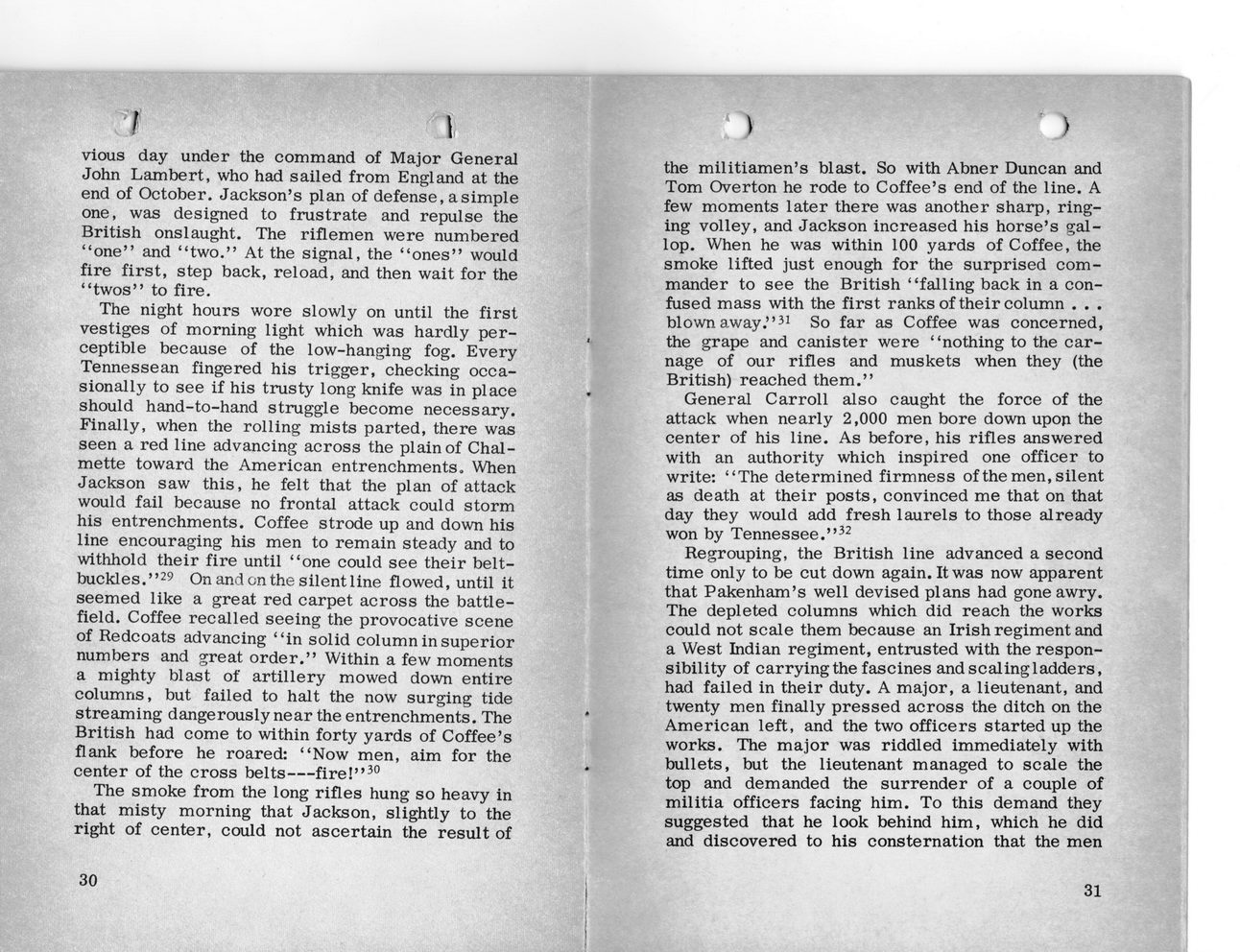This text was obtained via automated optical character recognition.
It has not been edited and may therefore contain several errors.
I I vious day under the command of Major General John Lambert, who had sailed from England at the end of October. Jackson?s plan of defense, a simple one, was designed to frustrate and repulse the British onslaught. The riflemen were numbered ?one? and ?two.? At the signal, the ?ones? would fire first, step back, reload, and then wait for the ?twos? to fire. The night hours wore slowly on until the first vestiges of morning light which was hardly perceptible because of the low-hanging fog. Every Tennessean fingered his trigger, checking occasionally to see if his trusty long knife was in place should hand-to-hand struggle become necessary. Finally, when the rolling mists parted, there was seen a red line advancing across the plain of Chal-mette toward the American entrenchments. When Jackson saw this, he felt that the plan of attack would fail because no frontal attack could storm his entrenchments. Coffee strode up and down his line encouraging his men to remain steady and to withhold their fire until ?one could see their belt-buckles.?29 On and on the silent line flowed, until it seemed like a great red carpet across the battlefield. Coffee recalled seeing the provocative scene of Redcoats advancing ?in solid column in superior numbers and great order.? Within a few moments a mighty blast of artillery mowed down entire columns, but failed to halt the now surging tide streaming dangerously near the entrenchments. The British had come to within forty yards of Coffee?s flank before he roared: ?Now men, aim for the center of the cross belts----fire!?30 The smoke from the long rifles hung so heavy in that misty morning that Jackson, slightly to the right of center, could not ascertain the result of 30 ) the militiamen?s blast. So with Abner Duncan and Tom Overton he rode to Coffee?s end of the line. A few moments later there was another sharp, ringing volley, and Jackson increased his horse?s gallop. When he was within 100 yards of Coffee, the smoke lifted just enough for the surprised commander to see the British ?falling back in a confused mass with the first ranks of their column . . . blown away.?31 So far as Coffee was concerned, the grape and canister were ?nothing to the carnage of our rifles and muskets when they (the British) reached them.? General Carroll also caught the force of the attack when nearly 2,000 men bore down upon the center of his line. As before, his rifles answered with an authority which inspired one officer to write: ?The determined firmness of the men, silent as death at their posts, convinced me that on that day they would add fresh laurels to those already won by Tennessee.?32 Regrouping, the British line advanced a second time only to be cut down again. It was now apparent that Pakenham?s well devised plans had gone awry. The depleted columns which did reach the works could not scale them because an Irish regiment and a West Indian regiment, entrusted with the responsibility of carryingthe fascines and scaling ladders, had failed in their duty. A major, a lieutenant, and twenty men finally pressed across the ditch on the American left, and the two officers started up the works. The major was riddled immediately with bullets, but the lieutenant managed to scale the top and demanded the surrender of a couple of militia officers facing him. To this demand they suggested that he look behind him, which he did and discovered to his consternation that the men 31

Battle of 1814 31